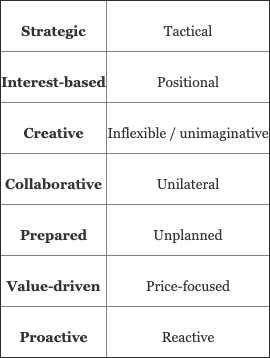Strategic Change: Even Though It’s Good For You It Doesn’t Mean It’s Easy
By: Rachel DiGiammarino
“Change is no longer the exception, it’s the rule.” How many times have we heard that before? Particularly from the business perspective, more books, articles, case studies and blogs have been written on the subject, a relatively new and dominating field of change management has emerged, and strategic agility has become a highly prioritized competency for leaders. Businesses should be simultaneously trying to figure out how to adapt in order to keep pace over the competition, retain dedicated staff, demonstrate value-add in their products, and increase customer loyalty. Harvard Business School Professor John P. Kotter wrote Leading Change: Why Transformation Efforts Fail, which was first published in 1995, and re-published in 2012 with a new preface by the author. His “Eight Steps to Transforming Your Organization” still hold true today and are what make or break a leader who is responsible for guiding institutional change.
While this article is a bit more micro-focused in the particular area of adopting a negotiation methodology to facilitate change (in outcomes, in relationships, in attitudes), there are correlations with Kotter’s Eight Steps related to forming a coalition, creating and communicating vision, empowering others, creating short-term wins, institutionalizing new approaches, and so on.
Do Old Habits Really Die Hard?
Like many of your peers, do you find that you are well-intentioned after participating in a training session about applying new skills and methodologies, only to discover that your initial enthusiasm fades as you fall back on old patterns and behaviors that are seemingly more efficient? How much effort does it really take to transition from the old to the new? When will you finally get more proficient and therefore more efficient? Are you swimming upstream or with the tide? When does it become the new norm?
From an organizational perspective, these are valid questions for a decision maker who is weighing not just the cost of implementing training, but the investment of time and effort to ensure that new skill development actually becomes an evolved cultural mindset across the enterprise. It takes discipline on the part of individuals and their managers; moreover, it takes commitment on the part of leadership.
Out with the old, in with the new.
When leaders from Sales, Human Resources, Marketing, and Procurement, just to name a few, recognize the need to change the process and outcomes of negotiations, there is likely both optimism and uncertainty with respect to the level of transformation. What is your organization’s capacity for change? What systems are needed to support a new process? Do you have strategic thinkers who can move beyond tactical measures to shift their mindset?
When it comes to negotiations, the process can be a strong indicator of the end result. Consider the cumulative effect of the elements within these two different approaches:
The definitions of these words may be simple and obvious, and even without training you could probably imagine how such different styles would affect a negotiation. But despite this logic, negotiations are most often an “us vs. them” approach, leaving value on the table and possibly a wake of damaged relationships. By contrast, placing high importance on the process of conducting effective negotiations and not just focusing on the end result will yield a different outcome.
Practice. Practice. Practice.
A leader who is both willing to admit the weaknesses of his/her company’s culture around negotiating and find a better solution that prioritizes individual learning and development in conjunction with systemic change is a leader whose commitment will be tapped repeatedly to ensure this evolution and ongoing associated achievements.
While increased productivity (i.e., efficiency) may be one of many desired outcomes, it will likely take a slight hit as the process of trying new ways, getting creative, and focusing on effectiveness becomes a priority. Particularly in the realm of “soft skills” (vs. functional & technical skills), a cycle of application, coaching, and reinforcement may be repeated many times before self-confidence and acceptance are firmly established.
Go Viral!
An interesting observation about corporate training is the assumption that others in your organization know what you’re doing, when in fact, most groups are operating in somewhat of a vacuum. You should have a plan in place to create awareness and share results broadly. Because negotiation and communication skills are applied as much internally (with others within the organization) as they are externally (with customers, vendors, partners), you will gain traction when you have more people rolling that rock up that hill. Spread the word, open yourself and your teams to feedback, measure the change. This new way of thinking about negotiations and doing business by creating value for all parties is worth as much to the larger organization as it is to a select group of people in a singular business unit who attend training. In other words, be part of the force that builds the momentum across the enterprise to ensure long lasting success.

